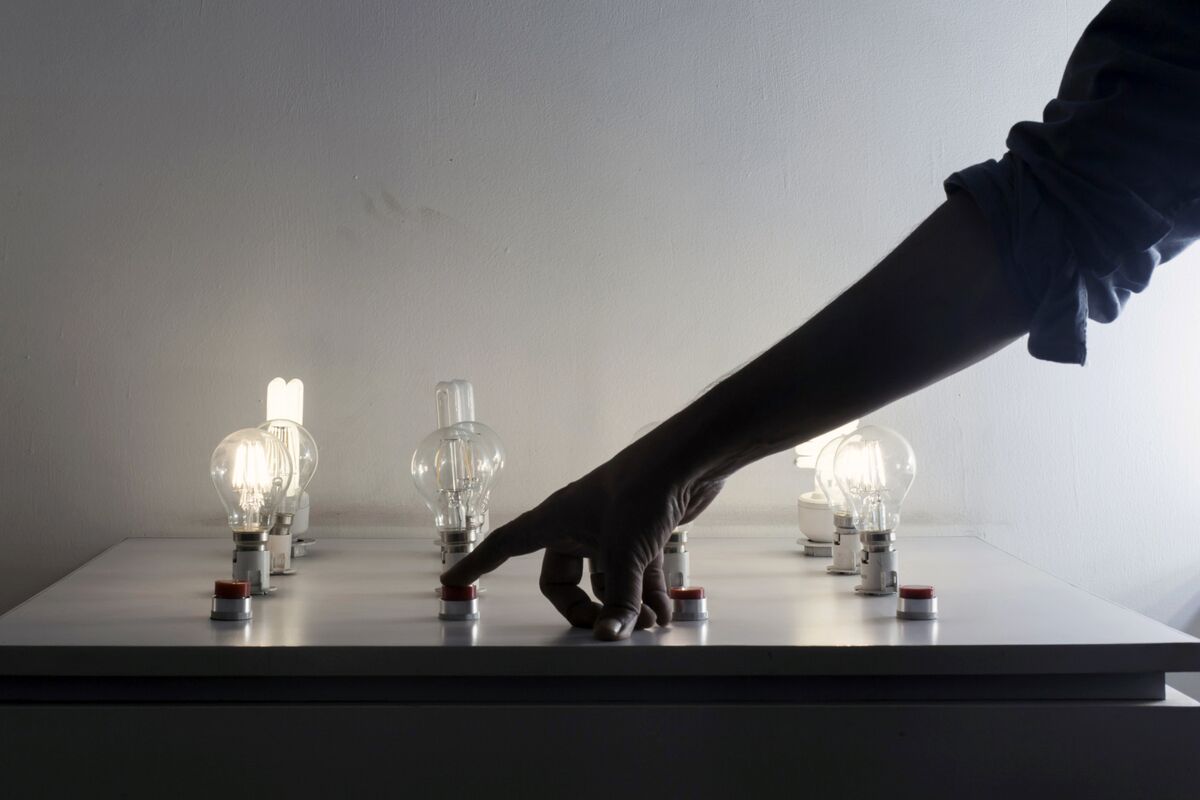The thing I like most about LEDs isn’t the reduced energy usage or longer life, though those are super nice. My favorite part is now that they’re running cool enough we can add some brains to the light bulbs. Motion sensors, timers, color changing add a lot of convenience and you get it in the same form factor you’re used to.
I really enjoy having my lights color temperature change with the time of day. Makes working in the basement a tad more enjoyable.
My favorite part is just space. I put strips up in the corners to light the living room with no extra tables or standing lights, no need for sky lights. Less crap in the way
That’s yet another thing I love about them. I decorated my kids’ rooms with just some LEDs on tape and it looks awesome, and they can change the colors, and it was super cheap and easy.
How do you power them? Just connect to the current lighting wiring?
Most led tape either comes with a small battery pack or just plugs directly into the wall socket
Yep, and you can even trim it with scissors and connect pieces together. It’s pretty neat stuff
Sadly, most of those features are bound to some shit app which tracks you and gets hacked every 2 years or so and your personal data stolen. You have to actually search to find non-smart lamps with motion sensor or color changing feature (5 of them to choose from).
Or if you are technically inclined you can buy Zigbee or Z-Wave stuff, get your own dongle for it and run Home Assistant on your home server, and do everything 100% locally and it can still be really “smart”. You can also do anything with it. But it’s definitely not for everyone.
Hopefully Thread/Matter will help with this, which is an initiative to make interoperable smart home … stuff.
deleted by creator
Hopefully Thread/Matter will help with this, which is an initiative to make interoperable smart home … stuff.
Yeah, i’ll start with it when it happens. I have self-hosted smart stuff always considered experimental stage (meaning: lots of changing gears) and i’m not the early adopter type if i can avoid it. May be fun for some but it’s tiring to me.
There is nothing experimental about self-hosting Zigbee stuff. It’s an open protocol, so as long as the devices follow it (at least somewhat correctly) you can work with it.
And the actual “hard work” has already been done by others - Zigbee2MQTT, for example, supports over 3000 devices, so the ground work of having device definitions with easy use has already been done. What Matter aims to do is to provide standards for devices so that they all have some minimal basic functionality, expose the same fields in the same way, etc. so you don’t need a hand-maintained library like that. There isn’t even really a reason to be skeptical; considering all this stuff already works well enough, it can only get better.
It can definitely be hard or tiring, but you wouldn’t be an early adopter. It’s like saying that switching to Linux now (or even 15 years ago) would make you an early adopter. It wouldn’t; it already works, plenty people have done it, but that doesn’t mean it won’t get better with time or that it’s easy or for everyone.
Yeah, I avoid anything internet connected unless absolutely necessary. However, there’s a ton of LED bulbs with neat conveniences but no internet connectivity.
I absolutely love my RGB smart bulbs. I remember when they first came out with smart lights and you not only needed the right bulb, but the smart bits were in the lamp, so you needed a special lamp too.
Being able to just buy smart bulbs and use them in anything is awesome. The ones I got can even be linked with IFTTT so I can do crazy shit like make the lights in my room react to my games.
I feel that light pollution has dramatically increased. Where I live, it has been linked to navigational issues with the Bogong moth, which drastically reduced the primary food source of the critically endangered Pygmy possum.
I just built a new house, and I followed recommendations from architects and now my living room has 100w of lights and looks like a 7-Eleven from outside. It’s the equivalent of 1000w of incandescent globes, which was unheard of.
You got 100W bulbs and not 100W equivalent? That makes zero sense. I didn’t even know you could find 100W residential LEDs.
Grab some 7W, 2700k dimmable LEDs and call it a day.
I think they meant they have 100 watts worth of LED bulbs, the equivalent of 1000 watts of incandescents.
Maybe I misunderstood but he seems to mean in total like adding all the lights not 100w each one.
Ideally our LEDs should emit a safe dose of UV-B and infrared too, because they are vital for vit D and melatonin production, both of which are extremely important for general health. As more and more of us become basement dwellers and winter depression enjoyers, this would help out a lot with public health.
a safe dose of UV-B
- The safe dose is zero and you can take a pill for vit d
That’s not true. We’ve evolved while being irradiated by the sun for literally billions of years. Your body has mechanisms to repair damaged DNA and kill+replace cells that are too damaged. Issues arise when the damage grows fast enough for your body to keep up repairs. E.g. you get a sun burn because you don’t have an adequate tan or you hug a reactor meltdown.
Supplements are an inadequate solution for many reasons.
- Vit D supplements barely get absorbed by the stommach. The only way to get adequate vitamin D levels with supplements is to take huge doses for like a month while testing your blood to see if levels are adequate.
- Most available Vit D supplements take a week to be metabolized into the active form.
- Vit D supplements can give you an overdose of Vitamin D and have severe negative health consequences.
Meanwhile half an hour of sunlight gives you healthy levels of Vit D without risk of overdose.
I’m not advocating for 1000W/m^2 UVB radiation blasting you 24/7, I’m talking about levels that are low enough that you can constantly be exposed to without a increase in risk.
And btw a lack of vitamin D causes severely bad health outcomes, even if it would cause a minor increase in skin cancer (which it doesn’t), the benefits of adequate vitamin D levels would vastly outweigh that risk.
Same with melatonin, supplements can’t replace the effect of exposure to infrared light. But at least with infrared people won’t spread misinformation about how there’s no safe levels.
We’ve evolved while being irradiated by the sun for literally billions of years. Your body has mechanisms to repair damaged DNA and kill+replace cells that are too damaged
We evolved for lots of things that are harmful overall. Unless there is evidence that sun exposure gives some non vitamin d advantage the fact it literally causes cancer means you should avoid it in general.
I like how your rebuttals both say that supplements are both not able to give you vitamin D but also simultaneously a risk of overdose.
Avoid the cancer causing radiation. Just take a pill every day and get your blood work done to see how much you should take.
But at least with infrared people won’t spread misinformation about how there’s no safe levels.
That’s because infrared light doesn’t cause cancer. Although your support for infrared light exposure does identify you as a bit of a quack.
I like how your rebuttals both say that supplements are both not able to give you vitamin D but also simultaneously a risk of overdose.
You do realize that you can be both chronically deficient of something while also acutely overdosing on it, right?
Yeah, if you take like 15 pills on one day or something stupid like that.
But unlike the risk of taking 15 vitamin d pills, literally all the potential of giving you skin cancer.
This doesn’t mean you have to be stupid and never go outside at all because “oh my goodness it’s going to give me cancer”. It just means that installing UVB emitters in our fucking light bulbs is a bad idea, and if you have vitamin d deficiency you can take a pill every day.
A pill is not a desirable solution for every and anything.
And if zero was the safe dose, no one would walk outside; we’d be cave dwellers.
It’s an interesting idea, but it’s also solved by being added to many foods or 2 cents a day of supplements.
It’s a funny thought. Would that fall under an FDA regulation or department of energy?
Cue breakfast cereal style commercial advertising light bulbs giving 100% of your daily vitamin D
the CDC would have to slap the FDA and DoE until they comply I guess
Given that the great big energy efficiency gains from LED lights comes from using just two emission bandgaps, one in the red part of the spectrum and another (the most efficient) in the blue - then surrounded by a phosporous layer to smooth the emission to cover more wavelengths than just those 2 - I doubt your suggestion would be possible without pretty much throwing away most of the energy efficiency of LEDs.
It makes more sense to, for those who need such things, have separate lamps with different technologies more suitable to emit in those wavelengths (incandescent is great for IR because it’s quite literally heating a piece of wire until it is so hot it emits light so you can tune it to be mostly IR, whilst various gases used in fluorescent lamps actually emit in the UV range, hence why the “colder” color fluorescent lamps have this white powdery layer inside the glass, as that’s a substance that absorbs the UV light and re-emits it mainly in the upper part of the visible apectrum, hence why it bluer white).
In fact I think you can do so already (get both IR and UV lamps) but their form factors might not be very practical as those are specialist devices for things like heating terrariums or illuminating signs which have elementes painted with fluorescent paint.
Pretty much all LED “lamps” are made of many separate LEDs. Nothing would prevent you from having a few UV LEDs in there.
It’s not a question of impossible (as there are emission bandgaps in the UV and in IR, used in regular LEDs), it’s a question of it being a complete total waste of efficiency to deploy that as standard to satisfy the perceived need of a small number of people.
I suppose that there being for sale LED lamps clearly marked as, say, “UV and Infrared Enhanced” or something like that would make sense, but adding it to LED lamps in general would be quite the step back when it comes to the gains we’ve had from the higher efficiency of the LEDs (mainly because, as far as I know, those two emission bandgaps in the red and blue part of the spectrum are the most efficient we’ve discovered so far for illumination).
Thinking about it, it’s quite a cool idea to, say, replace one of the LED “filaments” in the more modern LED lamps with one emitting in the UV or IR spectrum (you can actually get lose LED “filaments” with various colors from a place like Aliexpress, though a quick search hasn’t revealed any with colors outside the visible spectrum) and unlike in incandescent and fluorescent lamps the glass bulb itself doesn’t really serve to keep gas inside or outside - it’s mainly decorative and possibly to keep people from damaging the light structure holding the filaments - so can be removed, though, at least in cheap led light bulbs, one should match the voltage characteristics of the filaments already inside because the designs often take shortcuts to save on the cost of the mains adaptor module that sits inside the bottom of the light bulb.
You can make specific lamps for specific uses. Putting it in all lamps would just make it very difficult to regulate exposure.
that’s why you’d make the level of UVB radiation low enough that people could safely spend 24/7 under it, but high enough that it provides a health benefit
You might not get 100% of your vit D levels this way, but perhaps just a fraction of it. Depends on how the risk benefit calculation works out.
and of course infrared is generally harmless as long as it’s not strong enough to cook you.
winter depression enjoyers
That’s a new one.
Hi, I’m a winter depression enjoyer and I’m fucking miserable
Pessimists know the “rebound effect”: improvement in efficiency leads us to do more of the thing. More illumination for example. This (partially) counteracts the good effects.
The lower operating costs of LEDs allows people/organizations/govt to leave the lights on longer or all night at a reduce costs compared to filament bulbs.
This is often to the detriment of migratory birds.
https://darksky.org/news/what-you-should-know-about-bird-migration-and-light-pollution/
Lights Out encourages LED light users to turn them off at night.
That’s totally true, though, in this case with LEDs I feel like the rebound effect is less of a problem here. The LEDs are not only using less electricity, but they’re far brighter with addition to using less electricity for that brightness. It means that even if somebody decides to fill their room with 5 LED lamps with 806 lumens instead of 1 incandescent bulb, they’ll still waste less energy - in addition with 5 LED lamps of 806lm making your room look like the sun is shining inside.
The more powerful computers get, the more bloated software gets.
See, THIS is why electrical companies are lobbying to raise our rates. Think of the shareholders, man!
I thought this was common knowledge. It’s placard all over all the packaging. “Only 8w! 60w equivalent!!”
It’s adorable that you think that the average person has any idea how wattage relates to electricity usage. (Or even that the “w” in 8w is watts.)
It’s literally written on the front of the package.
Thanks for the condescending message. Don’t have a nice day.
You have to excuse him, he is just very smart!
I can’t read the article through the paywall but the teaser is light on technical data. I feel like this should be huge news, everywhere, as a huge success for the climate
Removed by mod
Yeah, because everyone loves brighter and cheaper bulbs that still have reasonable lifespan. And 5-10 years is quite a generous estimate for incandescent light bulb… That’s 50-100 hours a year. LEDs are rated for some 15-50x longer lifespan and you can easily shop lamps for longer lifespan or brightness or price
Obviously, you don’t remember having to change out incandescent bulbs…
What do you mean? Incandescent bulbs burned out over a period of months not years
It’s a capitalistic race to the bottom.
Big Clive did a video on “Dubai” lamps that run cooler to last longer.










